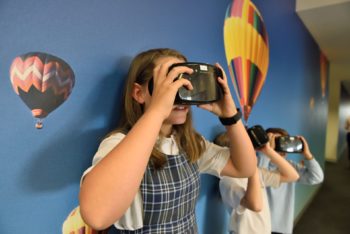
Through the Advancing Informal STEM Learning program (AISL), the National Science Foundation (NSF) has supported research and development in innovative STEM media, out-of-school programs, museum exhibits, and community-driven citizen science projects. Since the company’s inception, Rockman et al has served as a researcher or third party evaluator on numerous NSF informal STEM programs. In our analysis of AISL proposal review summaries from 2020 and 2021, we noticed that proposal reviewers were paying particularly close attention to the depth and authenticity of collaborations across organizations, and methods to broaden participation with groups traditionally underrepresented in STEM research or activities. In this blog post, we explore how you might consider these elements when preparing proposals for the newest AISL solicitation (21-599).
Two of AISL’s six program priorities are (1) Advancing Collaboration, and (2) Broadening Participation. To be both successful and sustainable informal STEM education requires collective knowledge and feedback from multiple diverse stakeholders.
The term collaboration is widely used but not clearly understood or operationalized. Collaboration can mean different things to different people. When thinking about how your project can advance collaboration you should ask yourself the following questions and include the most pertinent answers in your proposal:
- How are you defining collaboration? Who is involved in developing this definition?
- What strategies and relationships are essential to build and sustain these collaborations? How can you move stakeholders along the spectrum from involvement to full collaboration?
- What types of adaptive approaches can be implemented to promote inclusion and build capacity amongst a range of stakeholders?
- What criteria will be used to evaluate the impact and effectiveness of collaboration activities? What elements of the collaboration are you evaluating (e.g. leadership,competence, inclusivity, sustainability) What are your measures of success?
If your team plans to broaden the participation of groups traditionally underrepresented in STEM research and activities, we recommend engaging community members (including members of the target audience or those that can speak for them) during the proposal development process. This will help ensure that their perspective and expertise take center stage in the depiction of the proposed need, resources, and approaches. Ask yourself these questions:
- Why are individuals participating in this proposal? What are their personal and professional goals for being involved? How are community demographics, knowledge and values represented amongst the core team (PIs, project staff, etc.)?
- What community and cultural perspectives do team members bring to the proposed activities? What knowledge and resources can they share? How will you collaborate to ensure that all voices are represented equitably?
- What do community members want to know? What is important to them?
- How does the research/evaluation align with community needs or beliefs?
- If the grant is funded, what story does the proposal team want to be able to tell at its end? What activities and accomplishments matter the most?
- How can project findings be most effectively disseminated to community members?
You’ll also need to write the proposal in an effective, yet still inclusive manner. Consider these questions:
- When, where, and how often should you meet to plan the proposal? Who should participate in which meetings?
- How much time can your collaborators reasonably contribute?
- What key decisions require feedback from all proposal team members? Which decisions can be made by a smaller group?
Finally, don’t forget to review the AISL evaluation criteria, including the unique criteria for proposals that intend to broaden participation. You’ll find that the questions we’ve listed will help you articulate your target community’s needs, resources, and engagement strategies.
More information about the NSF AISL grant program can be found on NSF’s AISL page. Click here to find recently-funded AISL proposals. You can find additional helpful resources, including proposal webinar recordings and literature summaries, on the Center for Advancing Informal Science Education (CAISE)’s AISL Proposal Page.
If you are planning or considering an application for AISL and are seeking a research partner or evaluator, we encourage you to contact us as soon as possible to discuss your project needs. We are always happy to share what we’ve learned to help you develop a strong proposal.